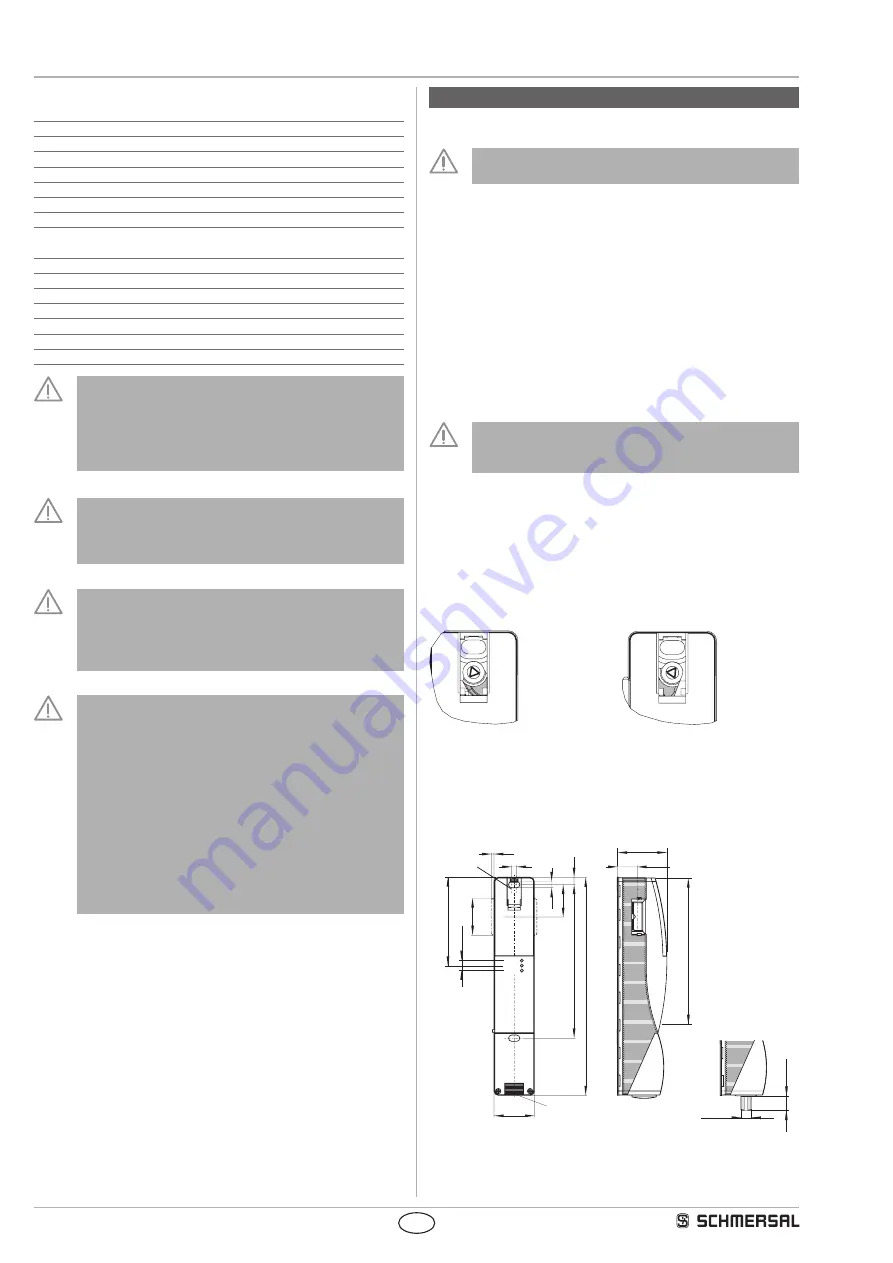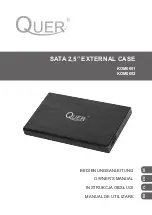
16
Operating instructions
Solenoid interlock
AZM201
EN
2.6 Safety classification
- of the interlocking function
Standards:
ISO 13849-1, IEC 61508, IEC 62061
PL:
e
Control Category:
4
PFH:
1.9 x 10
-9
/ h
PFD:
1.6 x 10
-4
SIL:
suitable for SIL 3 applications
Mission time:
20 years
- of the guard locking function
Standards:
ISO 13849-1, IEC 61508, IEC 62061
PL:
d
Control Category:
2
PFH:
1.0 x 10
-8
/ h
PFD:
8.9 x 10
-4
SIL:
suitable for SIL 2 applications
Mission time:
20 years
The safety consideration of the guard locking function
only applies for standard devices with monitored solenoid
interlock AZM201Z-…-1P2PW-… (see Ordering code).
A safety assessment of the guard locking function for
devices with serial diagnostics "SD2P" is not allowed due to
the non-safe locking/unlocking signal from the SD Gateway
The actuation of the interlock must be compared with the
external OSSD enabler. If a shut-down now occurs due to
an unintentional unlocking this is detected by an external
diagnostic.
If for a certain application the power to unlock version of a
solenoid interlock cannot be used, then for this exception an
interlock with power to lock can be used if additional safety
measure need to be realised that have an equivalent safety
level.
The safety analysis of the guard locking function refers to the
component solenoid interlock AZM as part of the complete
system.
On the customer side further measures such as safe
actuation and safe cable installation to prevent faults are to
be implemented.
In the event of a fault resulting in the unlocking of the guard
locking, this is detected by the solenoid interlock and the
safety gates Y1/Y2 switch off. When such a fault occurs
the protection equipment may open immediately, just once,
before the safe condition of the machine is reached. The
system reaction of category 2 allows that a fault can occur
between tests causing the loss of the safety function which is
detected by the test.
3. Mounting
3.1 General mounting instructions
Please observe the relevant requirements of the
standards ISO 12100, ISO 14119 and ISO 14120.
For fitting the solenoid interlock, two mounting holes for M6 screws
with washers (washers included in delivery) are provided. The solenoid
interlock must not be used as an end stop. Any mounting position.
The mounting position however must be chosen so that the ingress of
dirt and soiling in the used opening is avoided. The unused actuator
opening must be sealed by means of the dust-proof flap (included in
delivery).
Minimum distance between two solenoid interlocks
as well as other systems with same frequency (125 kHz): 100 mm.
Mounting of the solenoid interlock and the actuator
Refer to the mounting instructions manual for the corresponding
actuator.
The actuator must be permanently fitted to the safety guards
and protected against displacement by suitable measures
(tamperproof screws, gluing, drilling of the screw heads).
3.2 Manual release
For the machine set-up, the solenoid interlock can be unlocked in a de-
energised condition. After opening of the plastic flap "A" (refer to image
"Dimensions"), the triangular key must be turned clockwise to bring the
blocking bolt in unlocking condition. The normal locking function is only
restored after the triangular key has been returned to its original position.
Caution: do not turn beyond the latching point! After being put into
operation, the manual release must be secured by closing the plastic flap
"A" and affixing the seal, which is included in delivery.
Component ready
for operation
Component not ready
for operation
3.3 Dimensions
All measurements in mm.
40
220
155,5
5
6,5
32,5
38
7,5
M20x1,5
3,3
20 1
±
50
M12
Power
Fault
Status
150
(B)
15,5
13,3
89
A
Key
A: Manual release
B: Active RFID area









































